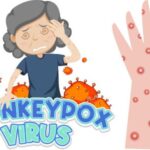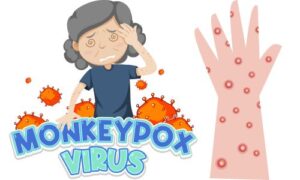Monkeypox has garnered significant attention due to a recent global outbreak. While the major outbreak of 2022-2023 has diminished, occasional cases still arise. This comprehensive guide offers insights into the virus, its symptoms, and effective prevention strategies.
Understanding Monkeypox
The Virus: Monkeypox stems from the monkeypox virus, a member of the orthopoxvirus genus, which also includes the variola virus (smallpox).
Origin and Transmission: Monkeypox is a zoonotic virus, meaning it can spread from animals to humans. However, the primary concern lies in human-to-human transmission, facilitated through various means:
- Direct contact with the infectious rash, scabs, or bodily fluids of an infected person.
- Respiratory droplets from prolonged close contact with an infected person.
- Contaminated objects, such as bedding or clothing, that have encountered the rash or bodily fluids of an infected individual.
- Pregnant women can transmit the virus to their fetus or newborn child during pregnancy or childbirth.
Symptoms of Monkeypox
Monkeypox symptoms may vary, typically progressing in two stages:
- Flu-like symptoms (1-3 days): Fever, headache, muscle aches, backache, swollen lymph nodes, chills, and fatigue.
- Rash (1-3 days after fever): Starting as flat red bumps, the rash evolves into small blisters, fills with pus, crusts over, and eventually falls off. Common areas affected include the face, hands, feet, and genitals.
It’s crucial to recognize that not everyone will experience all symptoms. If monkeypox infection is suspected, immediate consultation with a healthcare professional is advised.
Prevention Strategies
While no specific treatment exists for monkeypox, the illness typically resolves within a few weeks. Implementing these prevention strategies can be vital:
- Avoid close contact with infected individuals.
- Practice frequent hand hygiene: Regularly wash hands with soap and water or utilize alcohol-based hand sanitizers, particularly after public exposure or contact with sick individuals.
- Avoid contact with potentially infected animals: This includes wild rodents and non-human primates.
- Practice safe sex: Reducing the risk of skin-to-skin contact can mitigate transmission.
- Isolation during illness: If infected, self-isolate at home until all lesions have crusted over and healed.
Vaccination
- Jynneos (Imvanex in Europe): This vaccine is approved for preventing monkeypox in adults.
- High-risk groups: The Centers for Disease Control and Prevention (CDC) recommend vaccination for certain high-risk individuals. Consultation with a healthcare professional is essential to determine eligibility.
Latest Updates
- Global Monitoring: The World Health Organization (WHO) continually monitors the global monkeypox situation.
- As of April 9, 2024: No recent large-scale outbreaks have been reported.
- Stay Informed: It’s crucial to stay abreast of the latest updates from reputable sources like the WHO and CDC.
Conclusion
While the major monkeypox outbreak has waned, maintaining vigilance and adhering to preventive measures are imperative. By understanding the virus, its symptoms, and preventive strategies, individuals can safeguard themselves and their communities. Stay informed, practice good hygiene, and seek professional guidance to protect against monkeypox.






